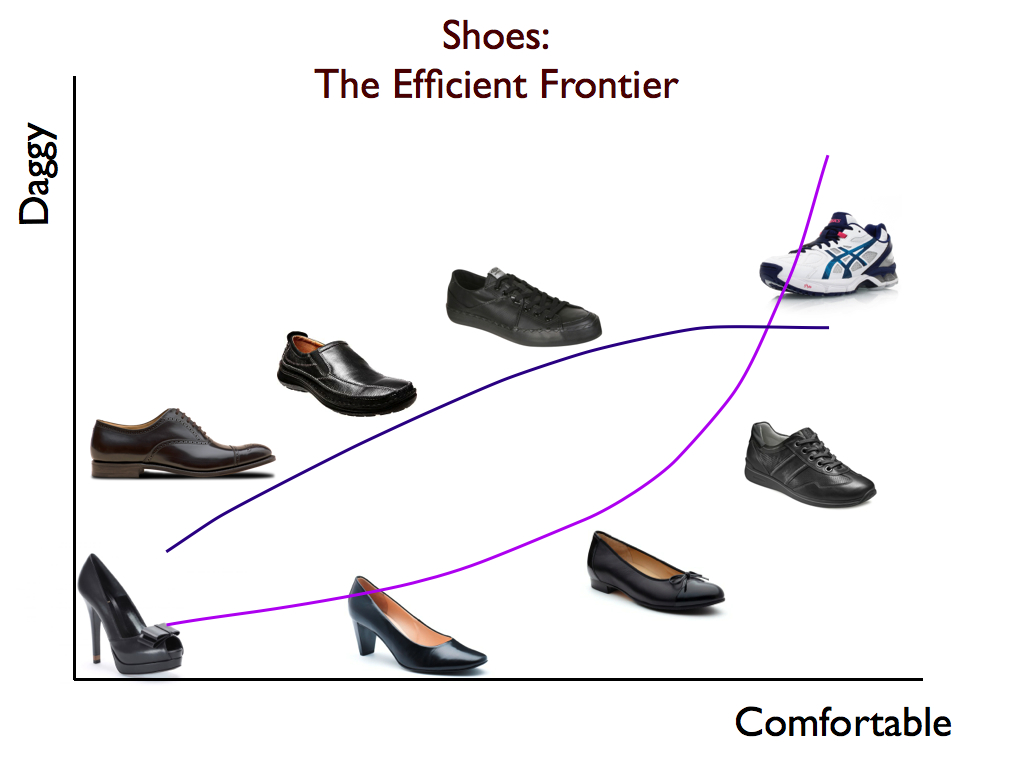 In financial economics, there is a concept called the efficient frontier of investing. You can combine a portfolio of shares and other investments in many ways. In theory, there is one line which consists of the intersection of the best return for each level of risk (or alternatively, the lowest risk for each level of return),
In financial economics, there is a concept called the efficient frontier of investing. You can combine a portfolio of shares and other investments in many ways. In theory, there is one line which consists of the intersection of the best return for each level of risk (or alternatively, the lowest risk for each level of return),
While I was futilely trying to convince myself that the shoes I was trying on would become more comfortable with a bit more wear, in my annual shoe buying expedition, I realised that it’s quite a useful concept for shoes, as well.
In buying shoes, there is generally an optimal level of comfort for a given level of dagginess. So in buying shoes, I try to optimise comfort at the least stylish point on the curve I think I can get away with for a given occasion. Others will choose comfort, and optimise fashion, but either way we will end up in the same place.
In putting together the efficient frontier graph, I realised something else. Changing gender from female to male moves the line upwards AND makes it much flatter. The only place the two lines intersect is at running shoes.

Is the process stochastic,and is the one place the two lines never intersect,the credit card?
Jennifer,
Whilst not wanting to create too much controversy I would suggest that the use of only two lines does not adequately represent the purchasing public.
Perhaps these graphs need a couple of extra dimentions and you might consider there are other factors than gender that have a greater impact on the steepness of the curve.
Thanks for the comments. In partial answer to both of you, price is clearly an extra dimension I wanted to add (but I’m not good at three dimensional graphs), and I’m sure there are other dimensions when you consider both the person wearing the shoes, and where they are wearing them.
Gender is pretty important though, if you watch people arrive to any corporate office and watch who changes their shoes when they get there.